#black women in herstory
Text


Sojourner Truth (c. 1797 - November 26, 1883)
Born Isabella Baumfree, Sojourner Truth was a slave in Ulster County, New York. Enslaved by Dutch sellers, Dutch was her first language. She was sold many times until 1826 when she escaped slavery (Truth ran away with her infant Sophia to a nearby abolitionist family, the Van Wageners, who bought her and freed her).
In 1829 she moved to New York City and began to support herself through domestic employment. In 1843 she left NY and changed her name to Sojourner Truth. She travelled and preached, sang, debated, and eventually was more formally introduced to the concept of abolitionism in a Northampton Massachusetts community, and spoke for the movement around the state. This movement also promoted women’s rights. She met with abolitionists such as Frederick Douglas, David Ruggles, and William Lloyd Garrison.
In 1850, Truth was beginning to participate more in the women’s rights movements, continuing to appear at Suffragette gatherings the rest of her life. While attending an Ohio Women’s Rights convention, she gave her famous “Ain’t I a woman?” speech, which was, unfortunately, altered by Frances Gage 12 years later. Gage giving her a southern slave dialect. In her speech she challenged the notions of racial, and sex based inferiority and inequality by reminding listeners of her strength and female status. Her involvement with the Women’s Rights movement caused a split between her and Douglas, who believed suffrage for black male slaves should come before women’s rights, while Truth believed they could be done simultaneously.
At the beginning of the civil war, Truth aided black men involved in the war. After the war, she was invited to the White House, and became involved in the Freedmen’s Bureau, where she helped former slaves gain employment. While in DC, she was involved in movements that opposed segregation, and in 1860 she won a lawsuit after a streetcar conductor violently tried to keep her from riding.
If you would like to learn more about the life of Sojourner Truth, here are some links below:
#i love women#loving women#women#loving womyn#celebrating women#herstorical women#women in herstory#women in history#herstory#herstorical black women#black women in herstory#historical black women#black feminism#herstorical black womyn#black womyn in herstory#ain’t i a woman#sojourner truth#womanism
33 notes
·
View notes
Text

Althea Gibson by Allison Adams
Althea Gibson (1927 – 2003) was an American tennis player and professional golfer. She became the first black athlete to break through the color line of international tennis. In 1956, she became the first person of color to win a Gram Slam title. The following year, she won both Wimbledon and the US Nationals, and won both again the following year. In all, she won 11 Grand Slam tournaments, including six doubles titles, In the early 1960s she also became the first black player to compete on the women’s professional golf tour.
At a time when racism and prejudice were widespread in sports and in society, it was enormously difficult to play in professional sports if you were black, let alone a woman, but she made history by competing not only in tennis but in the golf circuit as well. “I am honored to have followed in such great footsteps,” wrote Venus Williams, “Her accomplishments set the stage for my success, and through players like myself and Serena and many others to come, her legacy will live on.”
#althea gibson#Allison adams#art#artwork#female portrait#herstory#women in history#female athletes#women in sport#black history#women’s sports#tennis#golf#irl women/girls
20 notes
·
View notes
Photo

Happy Black History Month.
Two Films 24/7 On-Demand FREE Access. Virtual Screening link Register and watch thru February 18th!
https://www.wmm.com/celebrating-the-birthdays-of-two.../
INTERACTIVE CONVERSATION:
Wednesday February 15th,2023 07:00 PM EST
- Topic:
Conversation with Dr. Jennifer Abod Moderated by Chadra Pittman. Moving the Line Forward and Sisterhood in 2023.
Join Zoom Meeting https://us02web.zoom.us/j/86586465464
#radfem#audre lorde#angela bowen#jennifer abod#chadra pittman#black history#black history month#black women#herstory#history#black people#black culture#gmw#gm#feminism#streaming#event#o
98 notes
·
View notes
Text
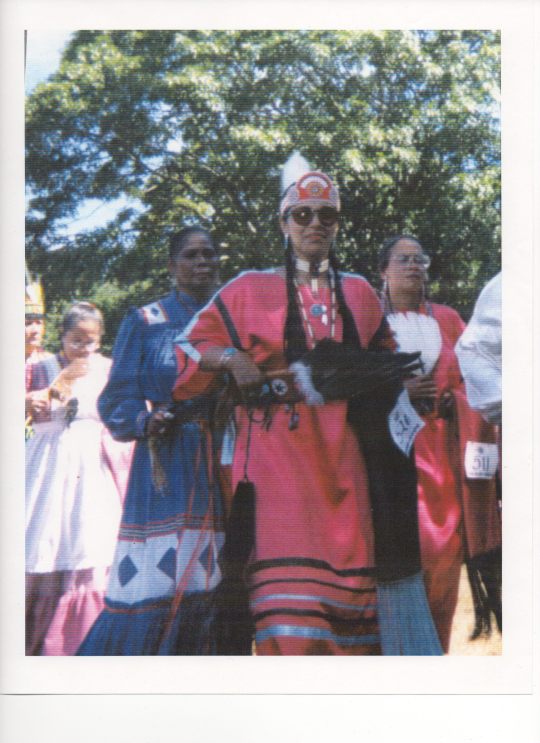
"Black Indians of Texas" via https://web.archive.org/web/20130210062325/http://texasblackindians.com/History.html
#tejanahistorias
13 notes
·
View notes
Text

#OTD 1957: Althea Gibson Wins Wimbledon!
1st Black Tennis Player to win a Grand Slam!
By Miriam Kleiman, Public Affairs

NARA ID 58260.
“From 143rd Street in Harlem to the center court in Wimbledon is about as far as one can travel.” —Althea Gibson
Althea Gibson, daughter of South Carolina sharecroppers, grew up in Harlem and became a champion of the very segregated sport of tennis. Gibson was the first Black tennis player to compete and win at both Wimbledon and the U.S. Nationals (Arthur Ashe was the 1st Black man to win at Wimbledon when he defeated Jimmy Connors 8 years later, in 1975). Eventually, she would play—and beat—all other top women’s tennis players worldwide, while shattering class and racial barriers!

Gibson, L, on the Wheaties box in 2001. Serena Williams, R, in 2019.
"In 2001, Wheaties paid homage to a true champion and an icon by putting her on the cover of a Wheaties Box. Althea Gibson was the FIRST Black Woman tennis player to be on the box. Today, I am honored to be the second. I have dreamt of this since I was a young woman and it’s an honor to join the ranks of some of America’s most decorated athletes. I hope my image on this iconic orange box will inspire the next generation of girls and athletes to dream big.” —Serena Williams
COMING SOON: ALL AMERICAN - THE POWER OF SPORTS

National Archives Museum in DC, 9/16/2022 - 1/7/2024
Exhibit includes Gibson's 1956 Wimbledon trophy! (on loan from the Smithsonian National Museum of American History)
Related Document Display: The Patsy Mink Act and Title IX
Through 9/7/2022, National Archives Museum in DC
More online!
Althea Gibson Wins the US Nat'l Championships, DocsTeach
Celebrate the 50th of Title IX with Archival Footage of Sporting Legends, The Unwritten Record
Celebrate Title IX's 50th! National Archives Tumblr
#blm#black lives matter#african america history#civil rights#tennis hall of fame#tennis history#title IX#herstory#black girls rock#black girls rule#womens history#althea gibson#serena#serena williams#wheaties#black women in sports#wimbledon#grandslam
315 notes
·
View notes
Text
Rebecca Lee Crumpler was also one of the first female physician authors in the nineteenth century.

In 1883, she published A Book of Medical Discourses. The book has two parts that cover the prevention and cure of infantile bowel complaints, and the life and growth of human beings. Dedicated to nurses and mothers, it focuses on maternal and pediatric medical care and was among the first publications written by an African American on the subject of medicine.

She made a number of contributions these societies, and the Massachusetts Medical Society. She was the first woman and/or person of color elected President of the Society of Academic Anesthesiology Chairs. Her legacy includes training over 100 anesthesiologists.
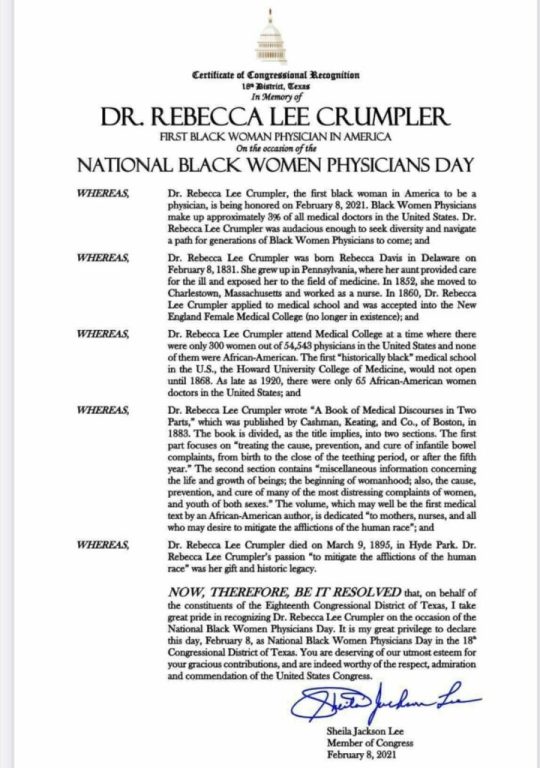
Crumpler was subject to "intense racism" and sexism while practicing medicine. During this time, many men believed that a nearly immutable difference in average brain size between men and women explained the difference in social, political, and intellectual attainment.Because of this, many male physicians did not respect Rebecca Lee Crumpler, and would not approve her prescriptions for patients or listen to her medical opinions.

Read more about her here!
V
V
V
#lgbt#human rights#humanity#leftist#lgbtq#history#love#black herstory#black woman#black history#blacklivesmatter#black women#black history month#black doctors#first black woman to become a doctor#doctor#medicine#african american history#heritage#autism#socialism#leftism#social justice
6 notes
·
View notes
Text
The Unofficial Black History Book
Janet Collins (1917-2003)


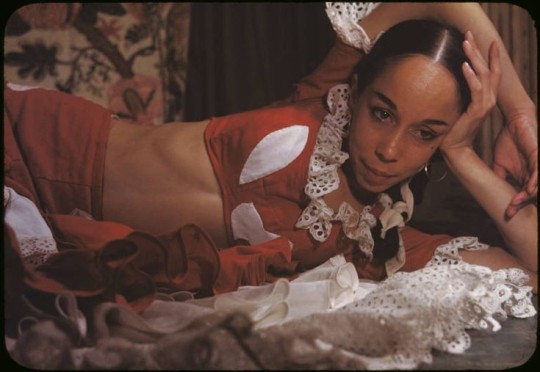


The history of ballet began around the 1500s in Italy. The term "ballet" stems from the Italian word "Ballare," meaning to dance. When ballet was introduced to America in the early twentieth century, it was a new form of art. Unfortunately, African Americans couldn't be part of ballet culture for many years, saying that our bodies were wrong for ballet.
Until one woman broke one of the last major color barriers in classical ballet,
This is her story.
Janet Faye Collins became the first African American prima ballerina and one of the very few prominent black women in American classical ballet. And the first black prima ballerina to perform with the Metropolitan Opera Ballet in New York City, New York.
She broke one of the last major color barriers in Classical Ballet.
Janet Collins was born on March 2, 1917, in New Orleans, Louisiana. Her mother was a seamstress, and her father was a tailor. They moved to Los Angeles, California, in 1921, when she was four years old.
She started taking private dancing lessons at a Catholic community center, and ironically, Collin's parents urged her to study painting rather than dance. Because at that time, art seemed to offer more opportunities to gifted African Americans than classical dance.
Collins studied art on a scholarship at Los Angeles City College and later at the Los Angeles Art Center School.
But she continued her dance training and attracted the attention of Adolph Bohm, Carmelita Maracci, and Mia Slavenska. All prominent dance instructors agreed to work with her. She continued her dance training with Carmelita Maracci, who was one of the few dance teachers at the time to accept black students.
At the age of 15, Janet prepared to audition for Leonide Massine and the De Basil Ballet Russe Company. The company was performing in Los Angeles during its American tour and advertised for an aspiring young dancer to audition for the company.
When it was Janet's turn, she was one of the best to audition. She moved with such beauty and grace that all the other ballerinas applauded her.
Massine saw her talent and accepted her into the company. But only under one condition...
He told her she would have to paint her face white for performances.
Going further into my notes, she was told that she would either need "special roles" created for her or dance with a white face to disguise the fact that she was black.
Collins left the audition in tears and vowed to perfect her art so that race would not be an issue.
In an exchange quoted in U.S. News & World Report, she responded, "I thought talent mattered, not color."
Collins found a cold reception in professional ballet, despite her training. However, she didn't let that set her back, and she continued to perform.
In the 1930s, when she was still in her teenage years, she performed as an adagio dancer in vaudeville productions.
In 1940, she became the principal dancer for the Los Angeles musical productions of "Run Little Chillun" and "The Mikado in Swing". At this time, she worked with the Katherine Dunham Dance Company.
In 1943, she performed in the musical film "Stormy Weather," and in 1946, she appeared in the film, "Thrill of Brazil."
In 1949, Collins made her New York debut after performing her own choreography on a shared program at the 92nd Street NY. In the same year, and after two more performances, Dance Magazine named her "The most outstanding debutante of the season."
Collins made her debut as a prima ballerina on November 3rd, 1948, at the Las Palmas Theater in Los Angeles, and critics praised her as a one-of-a-kind performer.
Zachary Solov, the Metropolitan Opera House's ballet master, noticed her in a Broadway production of Cole Porter's "Out of this World" in 1951. Solov then invited Collins to join the Metropolitan Company when she was 34.
November 13th, 1951: Collins broke a color barrier after her performance of ‘Aida'. She was the first African American prima ballerina with the Metropolitan Opera after a year of joining the Corps de Ballet. It marked the first time a black artist had joined the permanent company.
Unfortunately, Collins faced racism on the road as the company toured southern cities, despite her success in New York.
She was kept off stage due to Race laws, and sometimes her parts were performed by understudies who were white.
She remained at the Met until 1954. She would then go on to tour across the United States and Canada. She then began teaching ballet, which included using dance in the rehabilitation of the handicapped.
She also taught at the School of American Ballet, the San Francisco Ballet School, and the Harkness House.
Janet retired from performing and teaching in 1974. She spent the last years of her life painting religious subjects in her studio in Seattle.
Janet Collins died on May 28th, 2003, in Fort Worth, Texas, at 86 years old.
Despite all that was thrown at her, Janet Collins made a legacy for herself by becoming the first African-American Prima ballerina with the Metropolitan Opera and breaking its color line.
__
Previous
The 16th Street Baptist Church Bombing
Next
Juneteenth
___
My Resources
#the unofficial black history book#black history#black culture#black female writers#writing#indie writer#starving writer#black women#black activism#black writblr#black love#black ballerina#black icons#herstory#history#black history matters#black excellence#women of black history#janet collins#discrimination#black arts#preforming arts#writers on tumblr#women in history#black tumblr
12 notes
·
View notes
Text

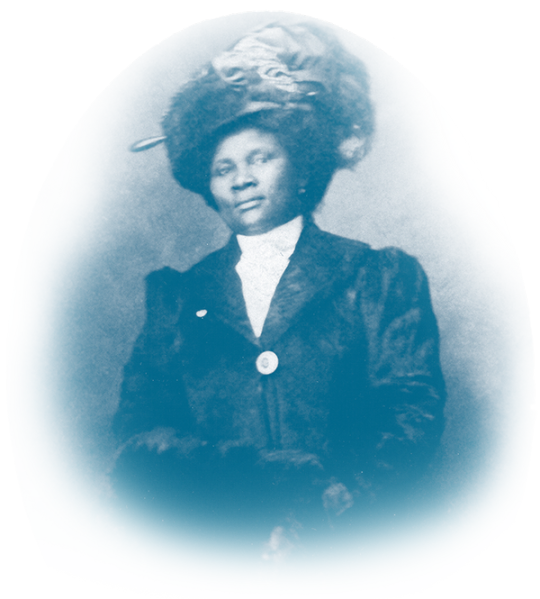
Madam CJ Walker (December 23, 1867 - May 25, 1919)
Sarah Breedlove, known by the name Madam CJ Walker, was born in Delta, Louisiana on a plantation to which her parents were enslaved before the end of the Civil War. She was their 5th child, but the first child born free after the Emancipation Proclamation. Becoming an orphan at 7 years old, her and her sister Louvenia worked in the cotton fields of Delta and the nearby Vicksburg, Mississippi.
At age 14, to escape abuse from her brother-in-law, she married to a man named Moses McWilliams (having a daughter with him, A’Lelia, in 1885) and eventually became a widow at age 20. She moved with her daughter back with her brothers who had become barbers making $1.50 a day, and made enough to send her daughter to school. In the 1890s, Sarah began to suffer from an ailment that caused her to begin losing her hair. After consulting her brothers, she used many products to try and help her situation, and her brothers gave her products made by one Annie Malone, a black entrepreneur.
Moving to Denver Colorado to become a sales agent for Miss Malone, she married one Charles Joseph Walker. Afterwards she changed her name to “Madam” CJ Walker, and started selling her own line of hair products for American black women. Her husband, working in newspaper advertisements, helped promote her products, though eventually the two divorced. After the divorce, she moved to Indianapolis and opened a manufacturing factory for her products, employing 40,000 black women and men in the US, central America, and the Caribbean, founding the “National Negro Cosmetics Manufacturers association” in 1917.
Fun facts
Upon moving to Indianapolis, she donated $1,000 (about $30,000 in today’s amount) to the first YMCA open to black Americans, and funded scholarships for women to attend Tuskegee Institute
She is the first black woman millionaire in the US
She established clubs for her employees so they could give to their communities
You can learn more about Madam CJ Walker through the following sources:
https://madamcjwalker.com/about/
https://www.womenshistory.org/education-resources/biographies/madam-cj-walker
https://www.google.com/amp/s/www.history.com/.amp/topics/black-history/madame-c-j-walker
#i love women#women#loving women#loving womyn#celebrating women#herstorical women#women in herstory#herstory#women in history#Madam CJ Walker#black women in herstory#black women in history#herstorical black women#historical black women
27 notes
·
View notes
Text

“Dream No. 26: The Eternal Eye,” circa 1951. Photograph by Grete Stern / Courtesy Museum of Modern Art © 2015 Estate of Horacio Coppola
#Grete Stern#photographer#art photography#photo collage#black and white#art by women#art#art herstory#women's art
3 notes
·
View notes
Text
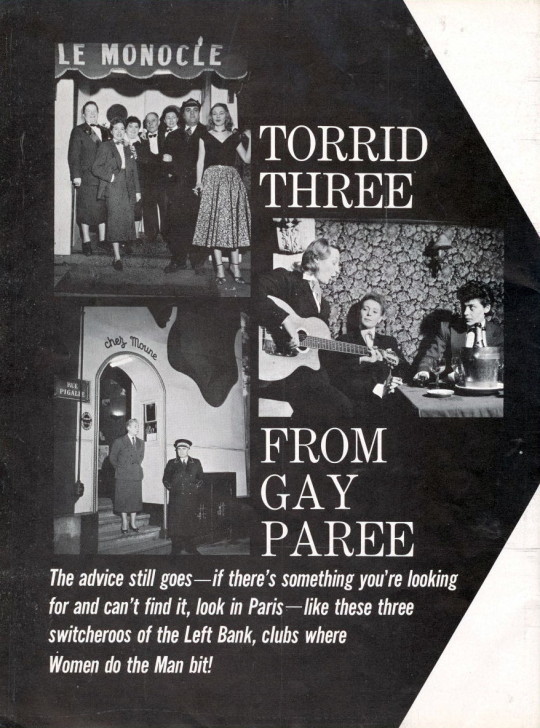
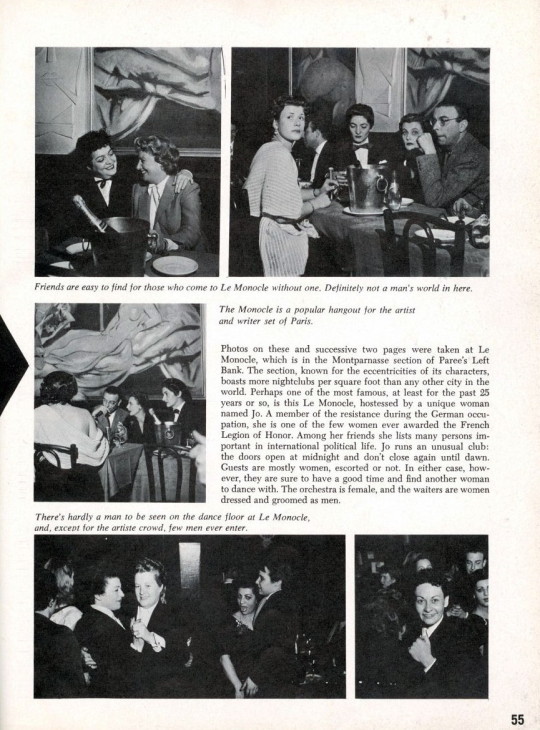
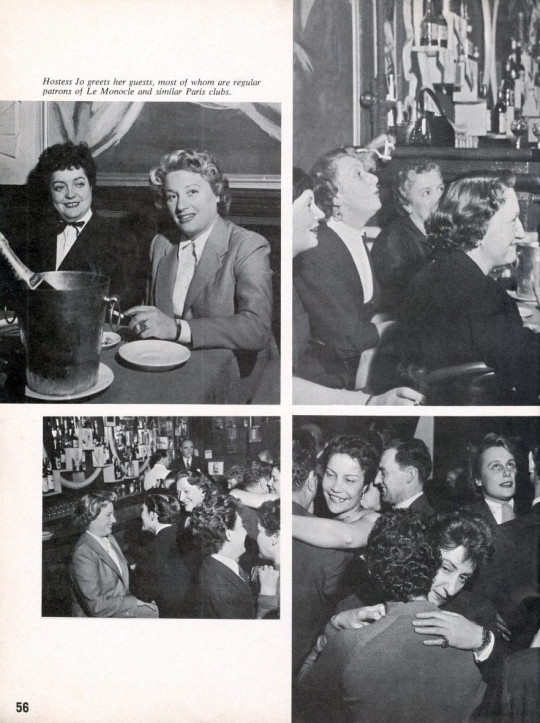
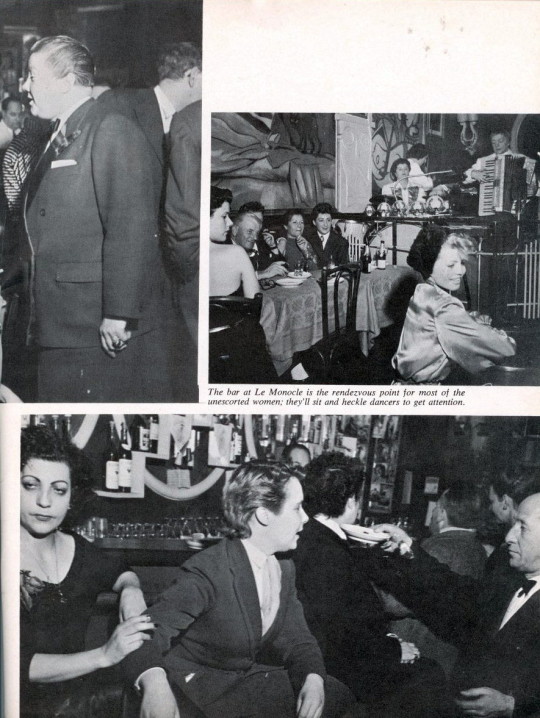
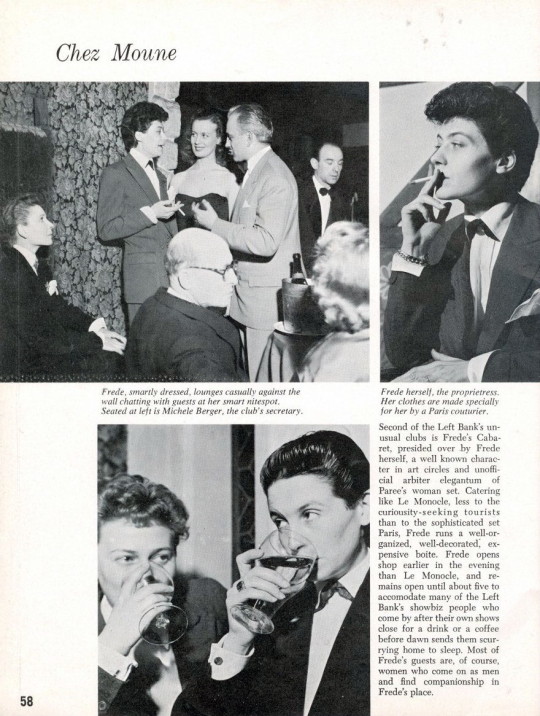

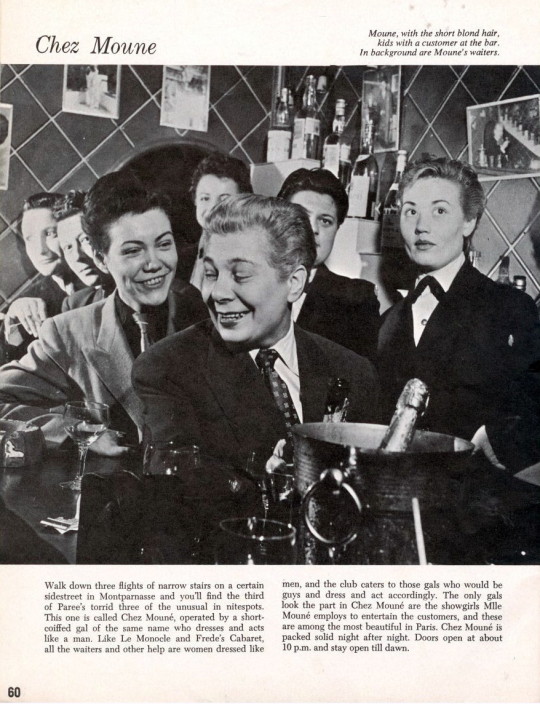
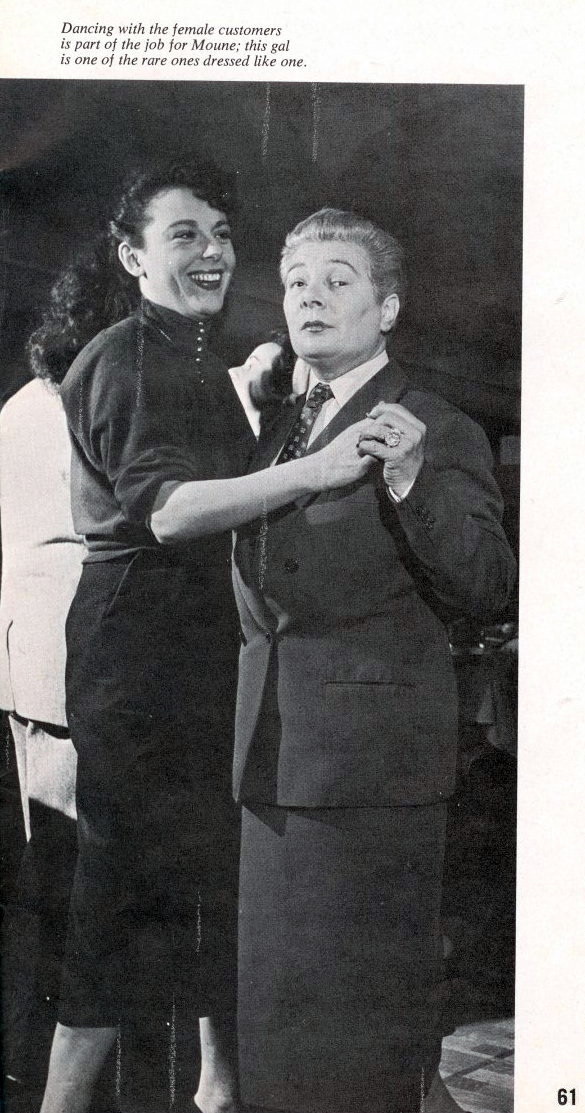
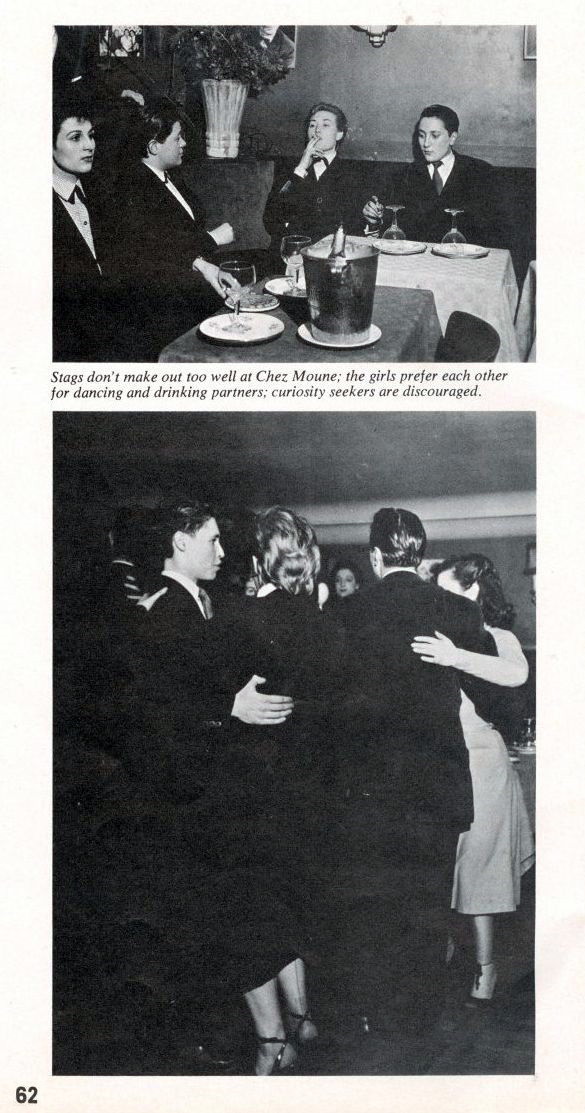
Masculine women at nightclubs in Paris, France {1963}
#masculine women#1960s#magazine#suit#couple#club#herstory#butch#female musicians#wlw#booze#smoke#black & white#party#women in suits#fashion
25 notes
·
View notes
Text

Dr. Jane Cooke Wright by The Covatar
Jane Cooke Wright (also known as "Jane Jones") (November 20, 1919 – February 19, 2013) was a pioneering cancer researcher and surgeon noted for her contributions to chemotherapy. In particular, Wright is credited with developing the technique of using human tissue culture rather than laboratory mice to test the effects of potential drugs on cancer cells. She also pioneered the use of the drug methotrexate to treat breast cancer and skin cancer.
#Jane c wright#the covatar#Jane Cooke wright#Jane jones#Jane c. wright#dr Jane Cooke wright#dr Jane c. wright#herstory#women in medicine#art#women in science#women in history#artwork#portrait#female portrait#chemotherapy#black history#irl women/girls
105 notes
·
View notes
Text
Wow. I'm loving everything this woman is saying. I'm looking at her wikipedia page and really wish I knew about her before now. M. Jacqui Alexander. West Indian feminist. Gotta read more.
#m jacqui alexander#caribbean culture#caribbean women#caribbean#west indian#west indian women#black women#black people#gm#o#to read#gmw#black herstory#herstory#history#radfem
81 notes
·
View notes
Photo
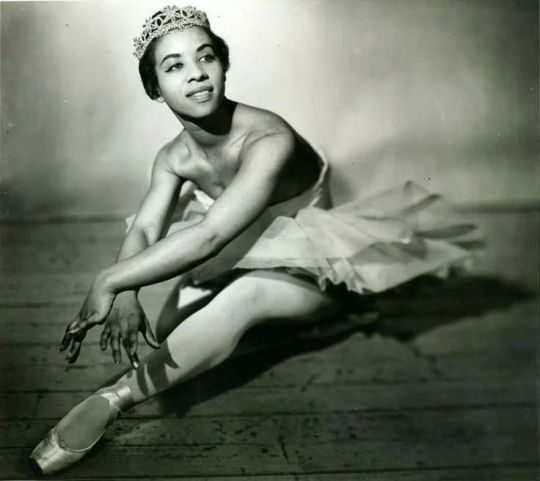
On This Day in New York City History February 2, 1935: Dancer Anne Raven Wilkinson (February 2, 1935 – December 17, 2018) was born in New York City, New York. Wilkinson has the distinction of being the first African-American woman to dance for a major classical ballet company.
Wilkinson was born into a middle class black family in Harlem. Her father was a medical doctor and her mother a ballet dancer. Her love for ballet was born from watching a performance of the Ballet Russe de Monte Carlo, a dance group that she would make history with.
Wilkinson would face difficulties in getting accepted to the Ballet Russe de Monter Carlo. Twice she was rejected before she was accepted at the age of 20 in 1955 by the director of the Ballet Russe de Monte Carlo, Serge Denham.
After leaving the group in the early 1960, Wilkinson would dance with a number row groups before retiring in 1974. That would be a short lived retirement. In the same year Wilkinson would join the New York City Opera and dance for them until 1985. In her later years she would serve as mentor to Misty Copeland who was a trailblazer in her own right. Copeland was the first African American to become a principal dancer at the American Ballet Theatre.
Wilkinson passed away on December 17, 2018 at the age of 83.
#AnneRavenWilkinson #BalletRusseDeMonteCarlo #AfricanAmericanHistory #AfricanAmericanStudies #BlackHistory #BlackStudies #BlackHistoryMatters #WomensHistory #WomensStudies #HERStory #DanceHistory #NewYorkHistory #NYHistory #NYCHistory #History #Historia #Histoire #Geschichte #HistorySisco
https://www.instagram.com/p/CoKa8wxuhZG/?igshid=NGJjMDIxMWI=
#Anne Raven Wilkinson#Ballet Russe de Monte Carlo#African American History#African American Studies#Black History#Black Studies#Black History Matters#Women's History#Women's Studies#HERstory#Dance History#New York History#NY History#NYC history#History#Historia#Histoire#Geschichte#HistorySisco
48 notes
·
View notes
Text
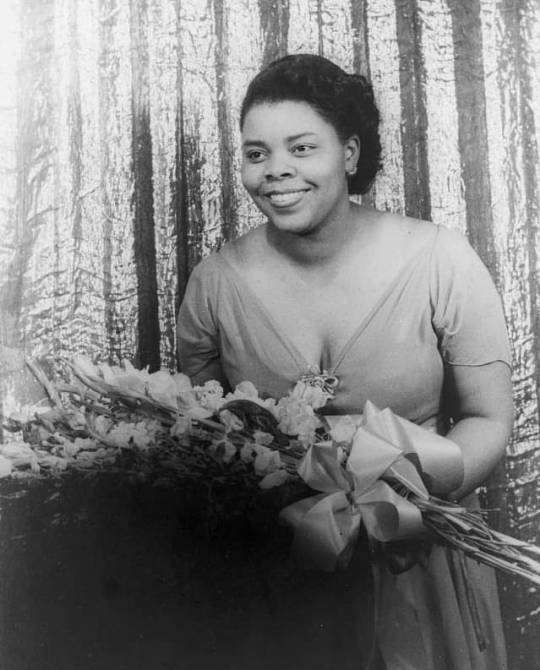
Contralto singer Carol Brice was born in Sedalia, North Carolina on April 16, 1918 into a musical family. Eventually she became one of the first African American classical singers with an extensive recording repertoire. Brice trained at Palmer Memorial Institute in Sedalia and then enrolled in Talladega College in Alabama, where she received her Bachelor of Music degree in 1939. She later attended Juilliard School of Music between 1939 and 1943 where she trained with Francis Rogers. In 1943 Brice became the first African American musician to win the prestigious Walter W. Naumburg Foundation Award.
Carol Brice first attracted public acclaim at the New York World’s Fair in 1939 when she performed in the opera, “The Hot Mikado.” Her next major public performance came in 1941, when she sang at a Washington concert honoring the third inauguration of President Franklin Delano Roosevelt. Her brother, the pianist Jonathan Brice, was frequently her accompanist at concerts and competitions.
Ms. Brice’s Broadway career accelerated after World War II when her talent for both opera and musical theatre became apparent. In 1946 she received her first recording contract from Columbia Records for Manuel de Falla’s El Amor Brujo, which was performed with the Pittsburgh Symphony Orchestra conducted by Fritz Reiner. She sang with the Pittsburgh Symphony for all of 1946 and later performed as Addie in the New York City Opera’s 1958 production of Marc Blitzstein’s Regina. Brice remained with the New York City Opera until 1963. She performed with Volksoper in Vienna, Austria from 1967 to 1971 and the Houston Grand Opera from 1976 to 1977. She played Maria in the Houston Grand Opera production of Porgy and Bess. The recording of that performance won a Grammy and the entire show moved to Broadway where it won a 1977 Tony Award for Most Innovative Production of a Musical Revival.
Brice also had a successful career on Broadway. She played Kakou in the original Broadway cast of Harold Arlen’s Saratoga (1958) and Maude in the 1960 revival of Finian’s Rainbow. During the 1960s her numerous roles included Catherine Creek in The Grass Harp, Harriett Tubman in Gentlemen, Be Seated, and Queenie in Showboat.
While performing in Vienna in 1968, she met her husband, the baritone Thomas Carey. The couple had two children. Mr. Carey returned to the U.S. in 1969 to teach at the University of Oklahoma in Norman, and Carol Brice joined him there after another stint on Broadway. Ms. Brice officially joined the University of Oklahoma faculty in 1974. One year later she and her husband founded the Church Circuit Opera Company in Norman, Oklahoma. The company was renamed the Cimarron Circuit Opera in 1981 and continued until Thomas Carey’s death in 2002.
Carol Brice died on February 14, 1985 in Norman, Oklahoma. She was 66.
Source: Black Wall Street, Facebook
#Carol Brice#contralto singer#very talented#black history#women's history month#HERstory#knowledge is power
8 notes
·
View notes
Text
6 notes
·
View notes
Text
There's not enough lesbians on planet earth ;-; Mother God plz have mercy, let lesbs rain from the heavens rn 😔🙏
#there's not enough people who love women as persons ¡-¡#for example when a woman or girl does something bad only her actions should be bad and not her entirely bc she is a person who can change#and when women & girls do a thing they want society shouldnt perceive them as unfit and/or limited to that thing#i've had enough of history i need HERSTORY!!!!#and apparently that s too much to ask for since we live in a world that favors men and boys..#you can imagine my rage yeah 🙂 all the women all these years who slaved away n sacrificed too much forthisfuckwardsociety..#if this rage was transferred to a star a black hole would form instantly :)))))))))))))))))))))))))))))))))))))))))))))))))))))))))))))))))#fttitv
5 notes
·
View notes